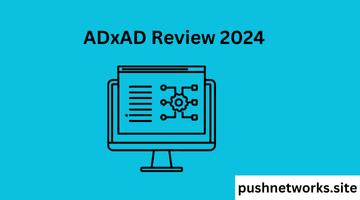What is ADxAD
ADxAD refers to a situation where two individuals, each having Attention Deficit Disorder (ADD) or Attention Deficit Hyperactivity Disorder (ADHD), are interacting with or related to one another. This term is often used to describe the dynamics, challenges, or interactions that may arise when two people with ADHD are involved, whether in a personal relationship, a family setting, or a professional context.
When both individuals have ADHD, their shared experiences with the condition can create a unique understanding and empathy between them, but it can also lead to specific challenges. For example, they might struggle with issues like disorganization, impulsivity, or difficulty maintaining focus, impacting their interactions and relationship dynamics. Understanding each other’s needs and finding effective strategies to manage ADHD-related symptoms together can be critical to a successful and supportive relationship.
When two individuals with ADHD (ADxAD) are interacting or in a relationship, there are both potential benefits and challenges. Here’s a breakdown of some pros and cons:
Pros
- Shared Understanding: Both individuals have firsthand experience with ADHD, which can lead to mutual understanding and empathy. They will likely be more tolerant of each other’s symptoms and behaviors.
- Enhanced Creativity: ADHD is often associated with high levels of creativity and out-of-the-box thinking. Both partners generate innovative solutions and ideas together when they possess these traits.
- Supportive Environment: They can offer practical tips and strategies that have worked for them, creating a supportive environment where each person feels understood and encouraged.
- Adaptive Problem-Solving: They may develop unique and effective strategies for managing daily challenges and creating routines that work for both.
- Mutual Motivation: They can motivate each other to pursue goals and work through difficulties as they understand the specific hurdles associated with ADHD.
Cons
- Increased Disorganization: Both individuals might need help with organization, time management, and following through on commitments, which can exacerbate these issues.
- Impulsivity Conflicts: If both individuals are prone to impulsive decisions, it could lead to conflicts, financial issues, or other problems resulting from rash choices.
- Difficulty with Focus: Maintaining attention and focus on shared tasks or goals can be challenging, leading to frustrations or unmet expectations.
- Communication Issues: ADHD can affect communication styles, and if both partners have difficulty with this, it may lead to misunderstandings or conflicts.
- Potential for Overwhelming: Managing ADHD symptoms can be demanding, and having both partners struggling with these challenges might lead to feelings of being overwhelmed or stressed.
Navigating a relationship where both partners have ADHD requires understanding, patience, and practical strategies for managing the symptoms. Open communication and mutual support are crucial to leveraging the strengths of ADxAD dynamics while addressing the challenges.
Setting up an account for ADxAD, assuming you’re referring to a platform, community, or service related to ADHD or similar interests, typically involves several steps. Here’s a general guide for creating an account on such platforms:
Research and Choose the Platform
- Identify the Platform: Determine which service or community you’re interested in, whether it’s a forum, a support group, a software tool, or another type of platform related to ADHD.
- Check for Credibility: Ensure the platform is reputable and offers value. Look for reviews, endorsements from credible sources, or any affiliations with ADHD organizations.
-
Sign Up
- Visit the Website or Download the App: Navigate to the platform’s website or download its app from an official source.
- Find the Sign-Up/Register Button: Look for an option to create a new account. This is usually labeled as “Sign Up,” “Register,“ or similar.
- Provide Basic Information
- Enter Personal Details: You may need to provide your name, email address, and other details like phone number or address.
- Create a Username and Password: Choose a username and a robust and secure password. For security, make your password a mix of letters, numbers, and symbols for Up Profile.
- Complete Your Profile: Fill out additional information required for the platform. This might include details about your ADHD experience, interests, or preferences.
- Upload a Profile Picture: Some platforms allow or require a profile picture. Choose an appropriate image if desired.
- Configure Preferences
- Adjust Settings: Set up your account preferences, such as notification settings, privacy options, and display settings.
- Connect with Others: If the platform allows, connect with other users or join relevant groups or forums.
- Verify Your Account
- Email Verification: Check your email for a verification message from the platform. Click the link provided to confirm your email address and activate your account.
- Additional Verification: Some platforms require verification steps like phone number confirmation or identity checks.
- Explore and Use the Platform
- Familiarize Yourself: Take some time to explore the platform’s features, tools, and resources.
- Engage and Participate: Start engaging with the community or using the tools provided. This might include posting in forums, joining discussions, or utilizing specific features related to ADHD management.
- Seek Help if Needed
- Support Resources: If you encounter any issues or have questions, look for support resources on the platform. This might include help articles, FAQs, or customer support contacts.
Following these steps, you can effectively set up and start using an ADxAD-related account to engage with resources, communities, or tools designed for individuals with ADHD.
Conclusion
ADxAD highlights the complex interplay between individuals who experience ADHD. On the positive side, their shared understanding and creativity can foster a supportive and innovative relationship. However, challenges such as increased disorganization, impulsivity, and communication difficulties require intentional strategies and open communication to manage effectively. By leveraging their mutual experiences and working together to address these challenges, individuals can build a fulfilling and resilient partnership, enhancing their overall quality of life.
